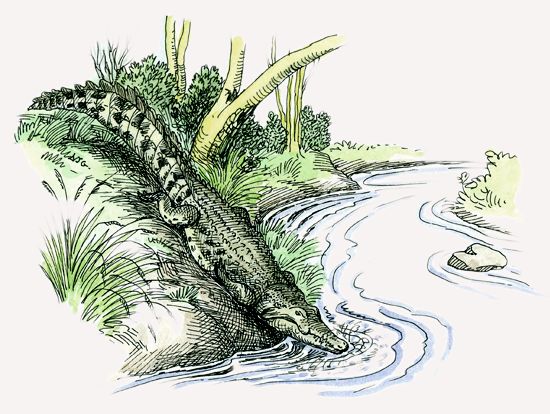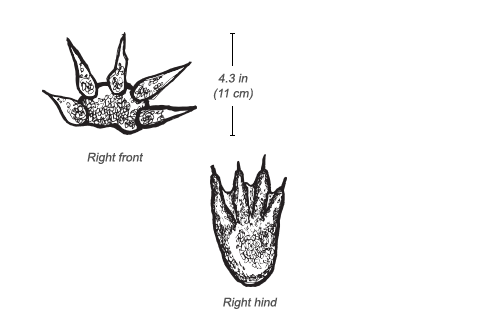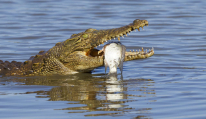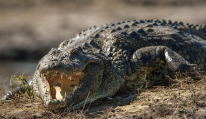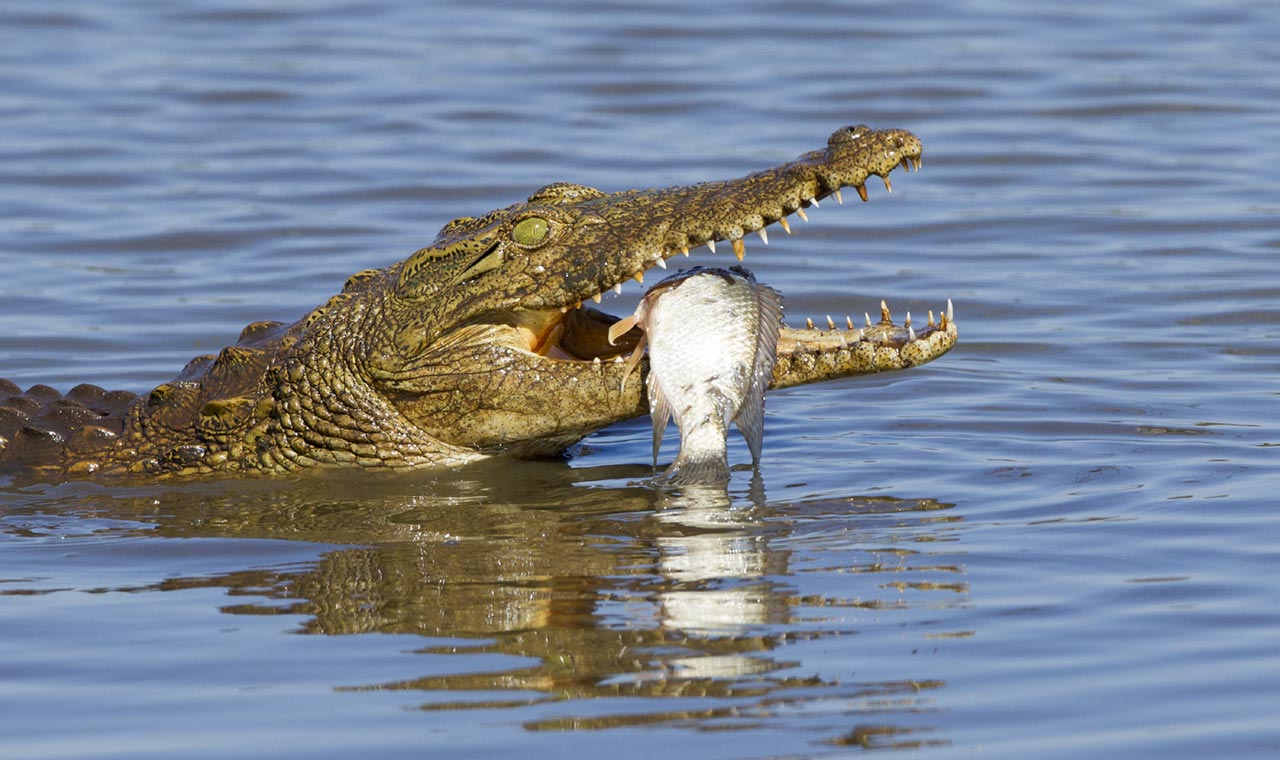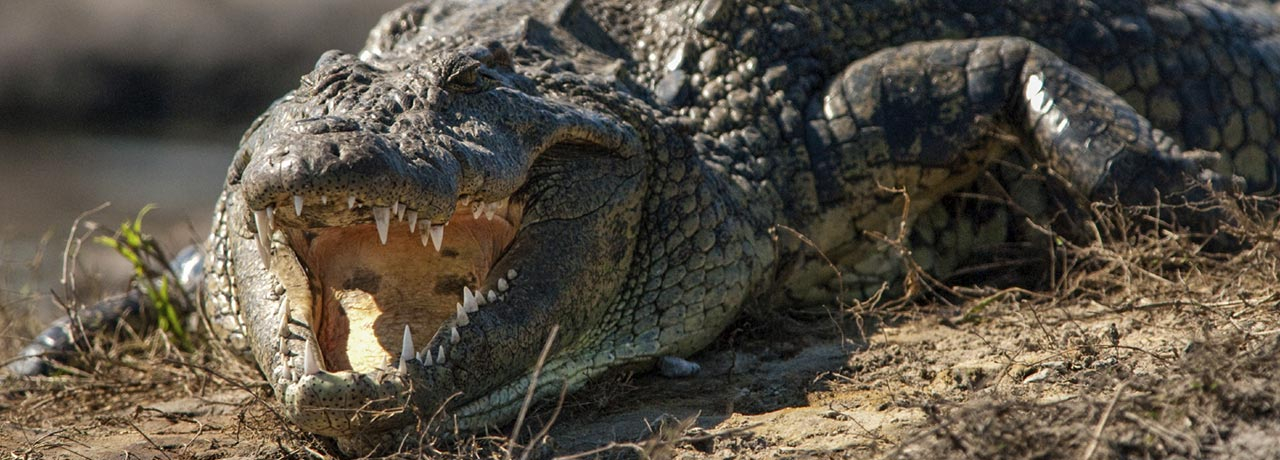Social Structure
Nile crocodiles are social creatures. Males defend territories along shorelines, but both sexes gather at basking sites, and females tend to make their nests near one another. Sometimes these reptiles hunt cooperatively, herding fish into shallow water. During these hunts, the largest crocs eat first.
Communication
Nile crocodiles use a range of calls and hisses to communicate.
Behavior
Nile crocodiles spend much of the day warming themselves in the sun, lounging with their mouths open, or retreating to the water to cool down. Small bumps, called integumentary sensory organs, cover their bodies and faces. More sensitive than human fingertips, these organs allow crocodiles to detect extremely slight movements as well as chemical and temperature variations in the water.
Conservation
Protection provided by international laws and conservation efforts have helped the population of Nile crocodiles recover after nearly being wiped out in the mid-1900s mainly by hunters. The International Union for Conservation of Nature (IUCN) now lists the Nile crocodile as a species of lower risk, although it still faces threats from habitat destruction, pollution, and hunting in some areas of its range.

